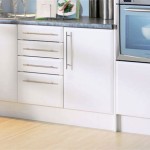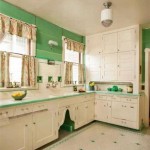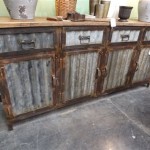Sink Kitchen Cabinets: A Comprehensive Guide
Sink kitchen cabinets, often referred to as sink base cabinets, are specialized cabinet units designed to house and support a kitchen sink. They are a critical component of any kitchen design, providing not only a functional space for washing dishes and food preparation but also contributing to the overall aesthetic and organization of the kitchen.
The selection and installation of sink kitchen cabinets involve careful consideration of several factors, including the size and style of the sink, the configuration of plumbing, and the desired storage capacity. Understanding the various types, materials, and design considerations is essential for creating a functional and visually appealing kitchen space.
Types of Sink Kitchen Cabinets
Sink kitchen cabinets are not a one-size-fits-all solution. They come in various configurations to accommodate different sink styles and plumbing setups. Choosing the correct type is vital for a seamless installation and optimized functionality.
Standard Sink Base Cabinets: These are the most common type, typically featuring a single, large cabinet space designed to accommodate the sink and plumbing. The cabinet is usually open in the back to allow for easy access to water lines and drain pipes. Standard sink base cabinets are available in various widths and depths to fit different sink sizes and kitchen layouts.
Farmhouse Sink Base Cabinets: Farmhouse sinks, also known as apron-front sinks, are characterized by their exposed front that extends beyond the cabinet. Farmhouse sink base cabinets are specifically designed to accommodate this unique sink style. They often feature reinforced support to handle the weight of the sink and a cutout in the front to showcase the apron. The height of these cabinets is crucial to ensure the sink sits at a comfortable working level.
Corner Sink Base Cabinets: These cabinets are designed to fit into the corner of a kitchen, maximizing space utilization. They are typically angled or L-shaped and can accommodate a single or double bowl sink. Corner sink base cabinets present a unique challenge in terms of plumbing and storage, requiring careful planning and installation. Often, they will have a Lazy Susan or other rotating shelving system inside to mitigate the difficulty of accessing the space.
Double Sink Base Cabinets: If a double bowl sink is preferred, a double sink base cabinet is the appropriate choice. These cabinets are wider than standard sink base cabinets to accommodate the larger sink size. They may also have additional features such as pull-out trash cans or dedicated storage compartments for cleaning supplies.
Blind Corner Sink Base Cabinets: A blind corner cabinet refers to one that joins two runs of cabinets where one side of the cabinet is not directly accessible. A blind corner sink base cabinet is one which incorporates a sink into this design, typically with the sink located on the accessible side of the L-shape. This is an unorthodox design and typically only used when space is extremely constrained.
Materials Used in Sink Kitchen Cabinets
The material used to construct sink kitchen cabinets significantly impacts their durability, appearance, and cost. Choosing the right material is essential for ensuring the longevity of the cabinets and preventing water damage.
Solid Wood: Solid wood is a premium material known for its strength, beauty, and durability. It is resistant to warping and cracking and can be refinished multiple times. Common types of solid wood used for sink kitchen cabinets include maple, oak, cherry, and walnut. However, solid wood cabinets are generally more expensive than those made from other materials and are more susceptible to damage from excessive moisture. It is important to ensure that the wood is properly sealed and finished to protect it from water damage.
Plywood: Plywood is an engineered wood product made from layers of wood veneer glued together. It is a strong and stable material that is less prone to warping than solid wood. Plywood is also more affordable than solid wood and offers good water resistance when properly sealed. It is a popular choice for cabinet boxes and shelving.
Medium-Density Fiberboard (MDF): MDF is another engineered wood product made from wood fibers and resin. It is a smooth and uniform material that is ideal for painted cabinets. MDF is less expensive than solid wood and plywood but is also more susceptible to water damage. It is crucial to ensure that MDF cabinets are properly sealed and finished to prevent moisture from seeping into the material.
Particleboard: Particleboard is the least expensive option for sink kitchen cabinets. It is made from wood chips and resin and is less dense and durable than plywood or MDF. Particleboard is highly susceptible to water damage and should be avoided for sink base cabinets unless it is specially treated with a water-resistant sealant. It is typically used for cabinet boxes and shelving in inexpensive cabinet lines.
Stainless Steel: While less common for the entire cabinet, stainless steel is sometimes used for sink base cabinets, particularly in commercial kitchens or modern residential spaces. Stainless steel is highly durable, water-resistant, and easy to clean. It offers a sleek and contemporary look but can be more expensive than other materials.
Melamine/Laminate: These materials are typically used as a surface covering over a core material like particleboard or MDF. Melamine is a thermosetting plastic resin that is fused to the core material under heat and pressure. Laminate is a similar material but can be applied in a variety of thicknesses and textures. They offer a durable and easy-to-clean surface and are available in a wide range of colors and patterns. However, they are not as resistant to water damage as solid wood or plywood and can chip or peel if damaged.
Design Considerations for Sink Kitchen Cabinets
Beyond the basic type and material, several design considerations influence the functionality and aesthetics of sink kitchen cabinets. These factors must be carefully considered to create a kitchen that meets the specific needs and preferences of the user.
Size and Dimensions: The size of the sink base cabinet should be carefully chosen to accommodate the chosen sink and allow for adequate plumbing clearance. The width, depth, and height of the cabinet must be considered, as well as the placement of the sink within the cabinet. Standard sink base cabinets are typically 36 inches wide, 24 inches deep, and 34.5 inches high, but variations are available to suit different kitchen layouts and sink sizes. Ensure the countertop height, including the sink rim, allows for comfortable use. Consider the user's height when planning countertop height.
Plumbing Considerations: Proper planning for plumbing is essential for a successful sink installation. The location of water lines and drain pipes must be considered when selecting and installing the sink base cabinet. The cabinet may require cutouts or modifications to accommodate the plumbing. A licensed plumber should be consulted to ensure that the plumbing is properly connected and meets all applicable codes. Ensure sufficient space for p-traps, shut-off valves, and garbage disposals (if applicable). Also consider the ease of access for future repairs or maintenance.
Storage Solutions: Maximizing storage within the sink base cabinet is crucial for keeping the kitchen organized. Various storage solutions can be incorporated, such as pull-out trash cans, utensil organizers, and shelving systems. Undersink pull-out organizers are particularly useful for storing cleaning supplies and preventing spills. Consider the type of items that will be stored in the cabinet and choose storage solutions that are tailored to those needs. Avoid storing heavy items directly on the cabinet floor to prevent damage.
Accessibility: Ensure that the sink area is easily accessible for all users, including those with mobility limitations. Consider the placement of the sink and the height of the countertop to ensure that it is comfortable for everyone to use. Install grab bars or other assistive devices if necessary. Consider the "work triangle" concept to ensure efficient workflow between the sink, refrigerator, and stove.
Ventilation: Adequate ventilation is essential for preventing moisture buildup and mold growth within the sink base cabinet. Ensure that the cabinet is properly vented to the outside or that a dehumidifier is used to control moisture levels. Regularly inspect the cabinet for signs of water damage or mold growth. Consider using an undersink mat to catch drips and prevent water damage.
Style and Aesthetics: The style of the sink base cabinet should complement the overall design of the kitchen. Choose a cabinet style, finish, and hardware that matches the other cabinets and appliances. Consider the architectural style of the home and choose cabinets that are consistent with that style. The sink itself should also be chosen to complement the cabinets and the overall kitchen design. Consider the color and material of the sink and how it will coordinate with the countertop and backsplash.
Toe Kick: The toe kick is the recessed space at the bottom of the cabinet that allows for comfortable standing while working at the sink. The standard toe kick height is 4 inches, but variations are available. Ensure that the toe kick is properly installed and finished to prevent water damage and create a clean, finished look.
Countertop Compatibility: The sink must be compatible with the chosen countertop material. Some countertop materials, such as granite and quartz, require special support for the sink. Consult with a countertop installer to ensure that the sink and countertop are properly installed and supported. Discuss the sink cutout requirements with the countertop fabricator to ensure a precise fit.
Budget: Sink kitchen cabinets are available in a wide range of prices, so it is essential to establish a budget before starting the selection process. Consider the cost of the cabinets, the sink, the faucet, the plumbing installation, and any necessary modifications to the kitchen layout. Compare prices from different retailers and consider purchasing cabinets online to save money. Remember that the cheapest option is not always the best, as it may sacrifice quality and durability.

Hampton Bay Shaker 36 In W X 24 D 34 5 H Assembled Sink Base Kitchen Cabinet Dove Gray Ksb36 Sdv The Home Depot

Hampton Bay 36 In W X 24 D 34 5 H Assembled Sink Base Kitchen Cabinet Satin White Ksb36 Sw The Home Depot

Hampton Bay Easthaven Assembled 30x34 5x24 In Frameless Sink Base Cabinet With False Drawer Front Unfinished Beech Eh3035s Gb The Home Depot

How To Replace A Kitchen Sink Base Cabinet Vevano

Hampton Bay 30 In W X 24 D 34 5 H Assembled Sink Base Kitchen Cabinet Satin White Ksb30 Sw The Home Depot

Kitchen Sink Cabinet Organization Ideas And Solutions Modern Glam

Sink Base Units Kitchen Diy Kitchens

Plywell Ready To Assemble 24x34 5x24 In Shaker Sink Base Cabinet With 2 Doors White Swxsb24 Cy The Home Depot

Country Sink Base Cabinet Specialty S Diamond

Hampton Bay 60 In W X 24 D 34 5 H Assembled Sink Base Kitchen Cabinet Unfinished With Recessed Panel Ksbf60 Uf The Home Depot
Related Posts








